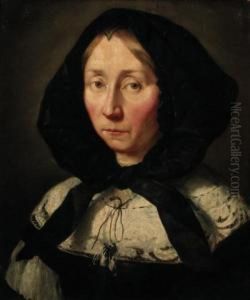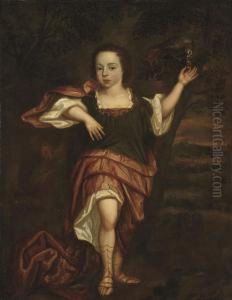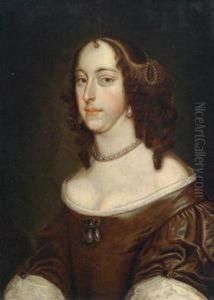Abraham Van Der Tempel Paintings
Abraham van der Tempel, born in Leeuwarden in the Dutch Republic in 1622, was a prominent Dutch Golden Age painter known for his portraits, religious subjects, and genre scenes. His early life was shaped by the artistic environment of Amsterdam, where he moved with his family during his childhood. Van der Tempel's father, Lambert Jacobsz, was a respected painter and art dealer, providing a fertile ground for Abraham's interest in art to flourish. Under the guidance of his father and possibly other masters in Amsterdam, van der Tempel honed his skills, developing a refined style that combined the clarity of the Dutch Golden Age with a keen interest in lighting and composition.
Van der Tempel's work is characterized by its sophisticated use of light and shadow, a testament to the influence of the broader trends in Dutch art, particularly the works of Rembrandt. However, van der Tempel distinguished himself by incorporating a serene elegance into his paintings, with a focus on the nuanced portrayal of his subjects. His portraits often depicted members of the Dutch elite, showcasing their status and wealth with a subtle yet powerful realism. Beyond portraiture, his religious and allegorical works reflect a deep understanding of biblical and mythological themes, rendered with a sensitivity that was highly appreciated by his contemporaries.
Throughout his career, van der Tempel was active in various cities in the Dutch Republic, including Amsterdam, Leiden, and Rotterdam. His reputation as a skilled painter earned him commissions from high-ranking officials and members of the aristocracy, cementing his status as one of the era's leading artists. Despite his success, detailed records of his life are relatively scarce, and much of what is known about him comes from his surviving works and a few contemporary accounts.
Abraham van der Tempel's contributions to Dutch art were significant, though after his death in 1672, his name became somewhat overshadowed by other luminaries of the Golden Age. Nonetheless, modern scholarship has begun to reassess his work, recognizing his unique ability to blend the grandeur of his subjects with a deeply personal and introspective approach. Today, his paintings are held in high regard, with examples found in major museums around the world, testament to his lasting impact on the Dutch artistic heritage.






